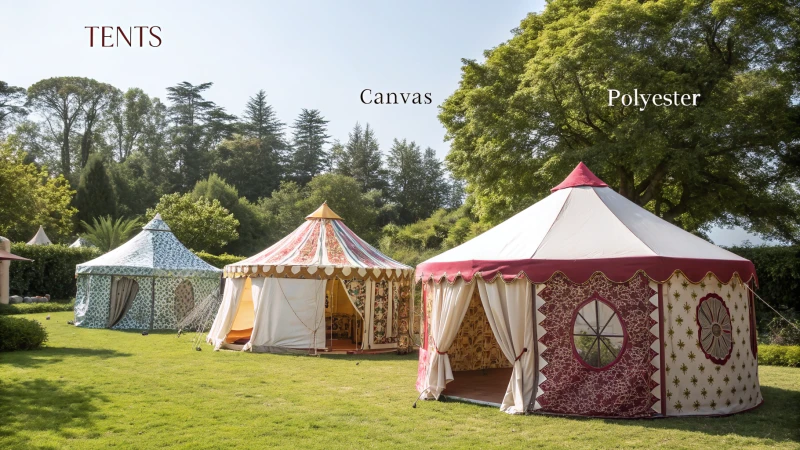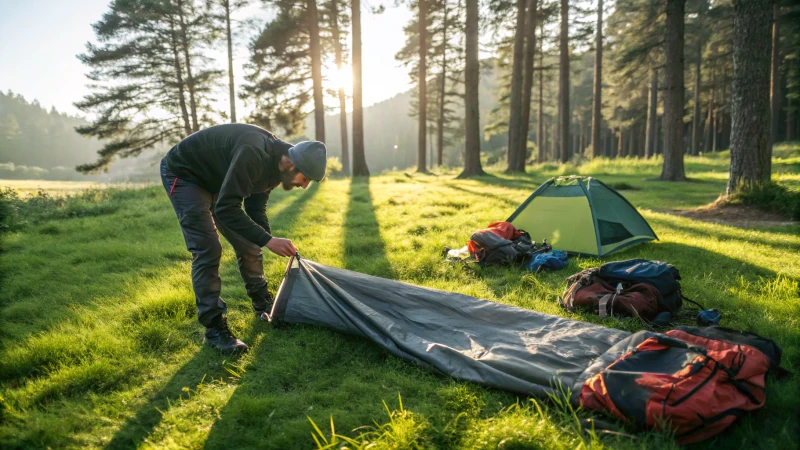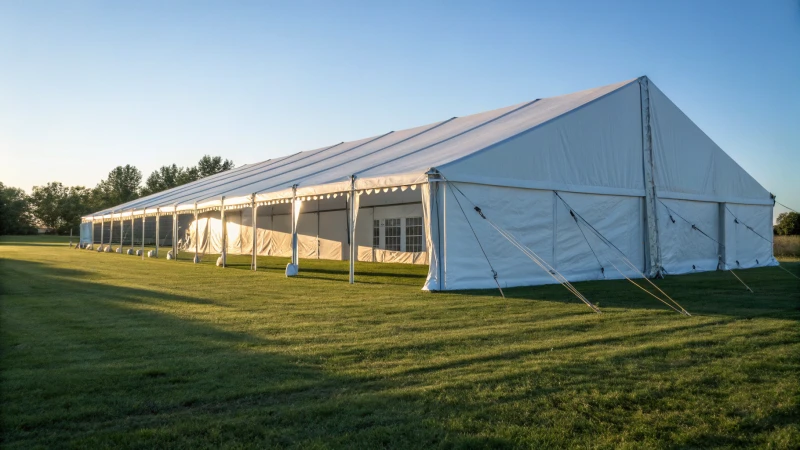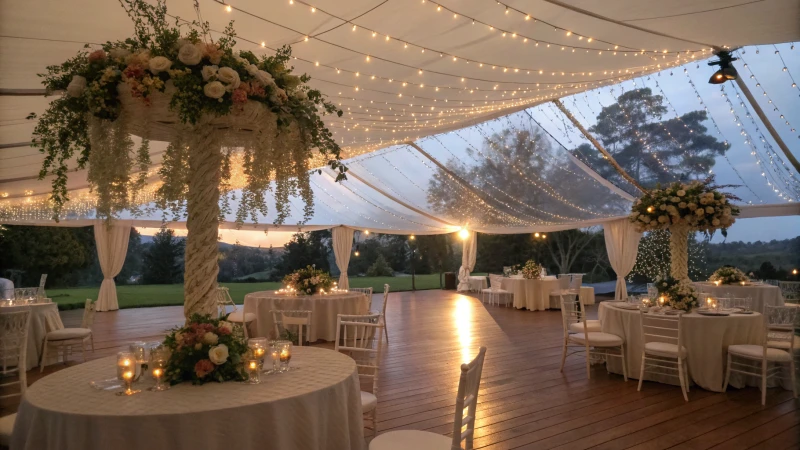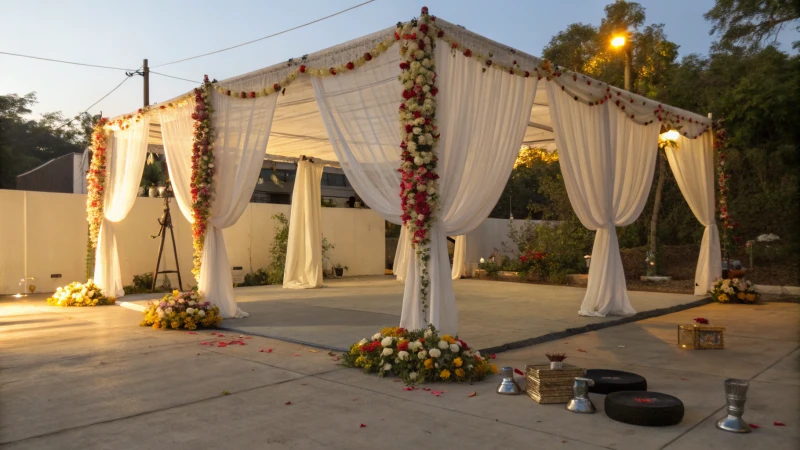
Imagine waking up in the great outdoors, only to feel like you’re in a sauna. Let’s tackle the summer heat in tents together!
Tents with UV-resistant fabrics and advanced ventilation systems are designed to stay cool during summer camping. These features block sunlight and enhance airflow. For extra comfort, adding portable air conditioning or exhaust fans can significantly improve the experience, ensuring your tent remains a cool haven even in the hottest weather.
While these initial solutions offer a promising start, I’ve discovered there’s much more to keeping a tent cool than meets the eye. From personal adventures, like that sweltering summer trip where I learned the value of strategic tent placement and choosing the right materials, to expert tips from seasoned campers, there’s a treasure trove of strategies. Dive deeper with me as I share how to select the perfect tent materials and set up effective ventilation to keep the inside temperature comfortable. Whether you’re a camping pro or just starting out, these insights will ensure your summer camping remains a refreshing escape.
UV-resistant tents block sunlight effectively.True
These fabrics reflect UV rays, reducing heat buildup inside tents.
Portable fans are ineffective in cooling tents.False
Portable fans enhance airflow, making tents cooler and more comfortable.
What Tent Features Help Reduce Heat?
Ready to beat the heat and stay cool while camping? Let’s explore some must-have tent features that make hot days a breeze.
To keep your tent cool, focus on ventilation features like skylights and zippered panels. Select UV-resistant and heat-insulating fabrics, opt for taller tents for better airflow, and consider adding cooling equipment like fans.
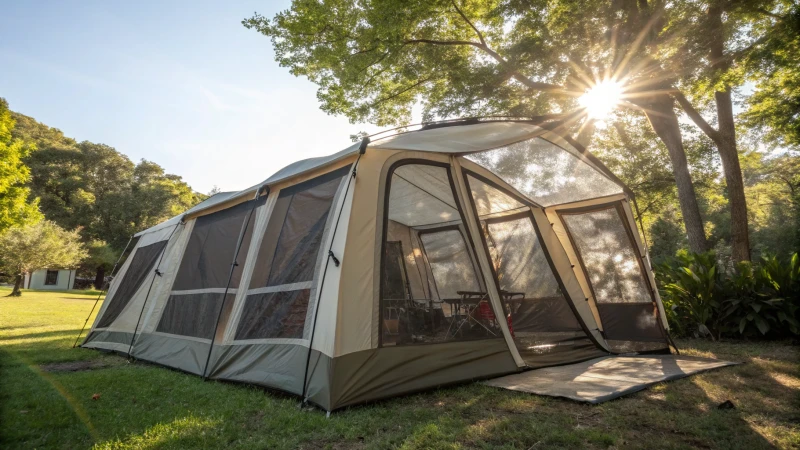
Understanding Ventilation Design
You know, I remember one summer camping trip where I felt like I was roasting in an oven—until I discovered the magic of ventilation designs! Modern tents often come with clever features like skylights or ventilation panels1 that can be opened up to let the hot air escape. Imagine a tall tent as a breezy skyscraper; the height helps with air movement, making it feel cooler inside. Windows and zippered panels give you control over the airflow, which is a game-changer.
Cooling Equipment Options
If you’re like me and crave extra comfort, consider bringing along some cooling equipment. I’ve found portable air conditioning units2 or battery-operated exhaust fans to be lifesavers, especially when camping in sweltering heat. These little gadgets can really help maintain a pleasant temperature inside your tent, turning it into a cozy retreat from the blazing sun.
Insulation Materials & Fabric Choices
Choosing the right materials is another key factor in keeping your tent cool. I once made the mistake of using a transparent fabric roof, and boy did it turn into a greenhouse! Instead, go for tents made from UV-resistant and heat-insulating fabrics, which do wonders in blocking sunlight and reducing internal temperatures. If you find yourself camping in particularly hot climates, you might want to look into materials like rock wool sandwich panels or composite steel panels for added insulation.
| Feature | Benefit |
|---|---|
| Skylights & Panels | Enhance airflow, allowing hot air to escape |
| Tall Structure | Promotes air circulation for a cooler interior |
| UV-Resistant Fabric | Blocks sunlight, reducing internal heat |
| Cooling Equipment | Provides additional temperature control inside the tent |
| Insulating Materials | Improves resistance to external heat sources |
These tips and features can transform your camping experience, ensuring you stay as cool as a cucumber even when the sun decides to turn up the heat. So next time you head out on an adventure, remember these insights to make your outdoor escapade a refreshing success!
Tents with skylights reduce heat effectively.True
Skylights enhance airflow by allowing hot air to escape, cooling the tent.
Transparent fabrics are ideal for hot climates.False
Transparent fabrics trap heat; UV-resistant options are better for hot climates.
How Can Ventilation Enhance Tent Comfort?
Ever felt trapped in a sauna instead of enjoying a camping trip? Let me share how proper tent ventilation saved my sanity and enhanced my camping experience.
Ventilation enhances tent comfort by promoting airflow, reducing heat buildup, and minimizing moisture. Features like mesh windows, vents, and strategic tent placement can significantly improve the interior environment.
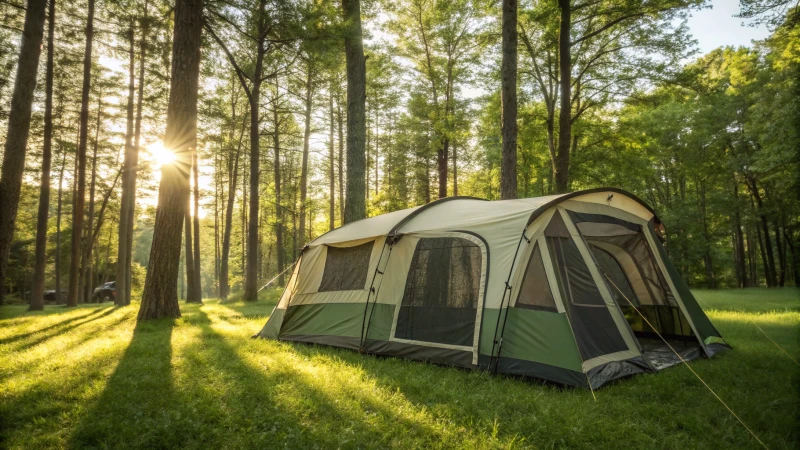
Understanding the Importance of Airflow
I remember the first time I realized the importance of proper ventilation in a tent. It was during a summer camping trip when I woke up drenched in sweat, feeling like I was in a sauna. That day taught me that ventilation systems3 are crucial for a comfortable camping experience. By allowing fresh air to circulate, you can reduce heat and moisture buildup, preventing that stuffy feeling often associated with closed environments.
Types of Ventilation Features
From that experience, I learned to appreciate tents with specific features:
-
Mesh Windows and Doors:
- These are lifesavers! They allow natural ventilation while keeping bugs at bay, which is crucial when you’re trying to enjoy a peaceful night under the stars.
- Provide natural ventilation.
-
Roof Vents:
- I can’t tell you how much it helps to have hot air escape through these. Especially in tents with single-layer fabric, they help prevent condensation.
- Allow hot air to escape.
-
Zippered Panels:
- These offer adjustable ventilation. I love that I can open them fully during the hottest parts of the day for maximum airflow.
- Offer adjustable ventilation options.
| Feature | Benefit |
|---|---|
| Mesh Windows | Keeps insects out |
| Roof Vents | Reduces condensation |
| Zippered Panels | Adjustable airflow |
External Factors Affecting Tent Comfort
Tent Placement:
- It was a game-changer when I figured out that placing my tent to face prevailing winds could maximize cross ventilation4.
- Avoiding low spots where cool, damp air settles overnight also made a huge difference.
Material Choices:
- After some trial and error, I found that tents made from breathable fabrics with reflective coatings work wonders in minimizing heat absorption.
- Consider UV-resistant materials5 that protect from direct sunlight.
Cooling Equipment and Accessories
Of course, natural ventilation works wonders, but sometimes you need a little extra help:
- Portable Fans: They can be a blessing in larger tents, ensuring air circulation inside larger tents.
- Air Conditioners: These are essential for extended camping trips in hot climates.
By integrating these features and strategies, you can significantly enhance the comfort level of your tent, ensuring a pleasant outdoor experience regardless of the weather conditions. Explore more on how to make your tent setup perfect with cooling solutions6 designed for campers.
Mesh windows prevent insects from entering tents.True
Mesh windows are designed to allow air in while blocking insects.
Roof vents increase condensation inside tents.False
Roof vents help reduce condensation by allowing hot air to escape.
How Can You Keep Your Tent Cool While Camping?
Remember the last time you camped and ended up melting in your tent? Let’s change that with some cool solutions.
Yes, there are portable cooling solutions for tents, including battery-powered fans, evaporative coolers, and compact air conditioners. These options are designed to be lightweight and energy-efficient, perfect for camping adventures.
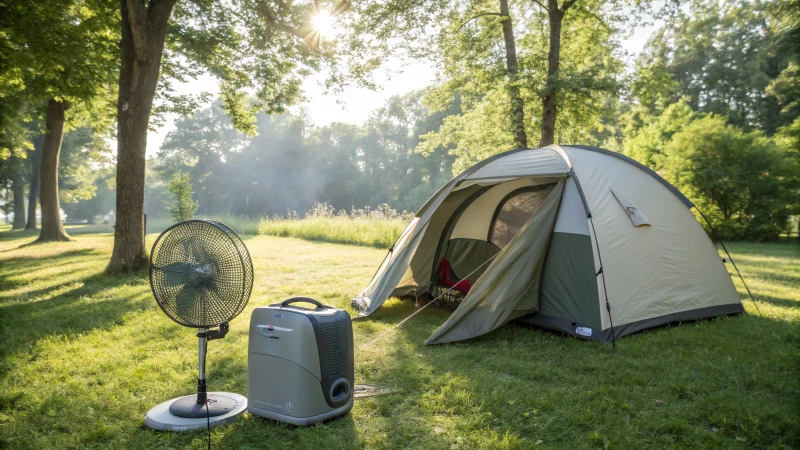
Types of Portable Cooling Solutions
Once, during a summer camping trip, I learned the hard way how crucial cooling solutions are. Picture this: sweating buckets and desperately fanning myself with a camping guide. Let’s explore some lifesavers that could have saved me from that!
Battery-Powered Fans
Battery-powered fans are a camper’s best friend7. They’re compact, easy to toss into your backpack, and bring a refreshing breeze to your tent. I remember the relief when I finally got one with a built-in LED light—it was like finding a hidden gem!
| Model | Battery Life | Additional Features |
|---|---|---|
| XYZ Portable Fan | Up to 12 hours | Built-in light, USB charging |
| Breeze Ultra | Up to 8 hours | Clip-on design |
| CoolWind Compact | Up to 10 hours | Swivel head |
Evaporative Coolers
Evaporative coolers, often called swamp coolers, use the magic of water evaporation to chill the air. These nifty gadgets excel in dry climates, a revelation I discovered on a particularly arid camping trip.
- Pros:
- Perfect for dry environments
- Energy-efficient operation
- Cons:
- Not ideal in humid areas
Compact Air Conditioners
When the heat becomes unbearable, compact air conditioners can be a game-changer. Although I haven’t tried one yet, some fellow campers swear by their power.
- Pros:
- Excellent cooling power
- Best for larger tents
- Cons:
- Bulky and heavier
- Higher power needs
Tips for Enhanced Cooling
To keep your tent as cool as possible, think about ventilation. Open those windows and doors to let fresh air flow through. Position your cooling devices at the lowest point inside your tent; it’s where the cool air naturally settles. Lastly, setting up under some shade can make a huge difference—trust me, I’ve learned from my mistakes! For more tips and detailed guides, check out tent cooling tips8.
Battery-powered fans are ideal for humid environments.False
Battery-powered fans provide airflow but don't reduce humidity effectively.
Compact air conditioners need a power source to operate.True
These units require electricity from a generator or other power source.
What Materials Should You Avoid in Hot Climates?
Imagine stepping outside and instantly feeling the heat wrap around you like a thick blanket. Picking the right materials for hot climates can make all the difference in staying cool and comfortable.
In hot climates, steer clear of synthetic fabrics like polyester and nylon, as they can trap heat and moisture. Instead, choose natural fibers such as cotton and linen to stay cool and comfortable.
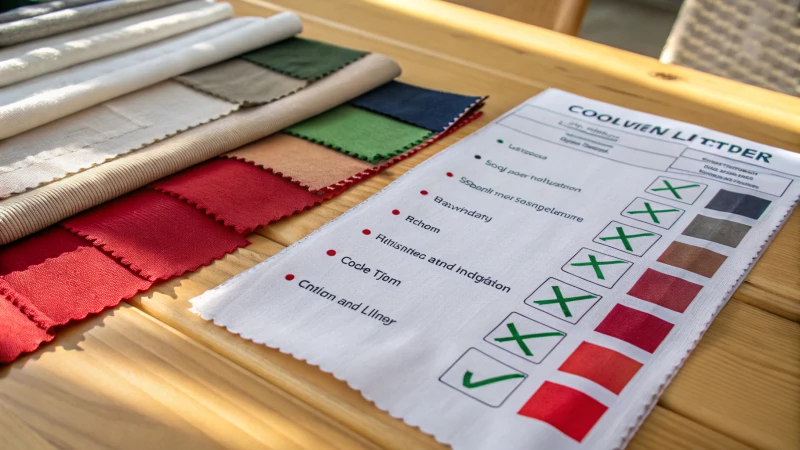
Understanding Fabric Choices
When I first moved to a hotter climate, I learned the hard way that not all fabrics are created equal. Synthetic materials like polyester and nylon were my go-to for their durability, but I quickly realized they lack breathability, trapping heat against my skin. This left me uncomfortably sweaty and occasionally led to skin irritation—definitely not ideal!
Natural Fibers:
| Material | Properties |
|---|---|
| Cotton | Breathable, moisture-absorbing |
| Linen | Lightweight, highly breathable |
Switching to natural fibers like cotton and linen was a game-changer for me. Cotton9 absorbs moisture beautifully, while linen feels so light, it’s almost like wearing air! These materials allow for better airflow, keeping me much cooler on sweltering days.
The Impact of Color and Finish
I remember a particularly hot afternoon when I was regrettably dressed in dark colors. The extra heat absorption was palpable. It was then that I realized lighter shades are not just a fashion statement but a practical choice for reducing heat intake. Additionally, fabrics with heavy finishes tend to feel bulkier and restrict airflow, which I now avoid.
Footwear Considerations
Footwear is another crucial factor. I used to wear leather shoes everywhere until I noticed how much they contributed to my discomfort in the heat. Switching to breathable options like canvas or mesh has been a relief for my feet, allowing air to circulate and keeping them much cooler.
Functional Design Elements
Functional clothing designs can also help. Loose-fitting clothes are my staple now; they allow air to circulate freely. Plus, garments with UV protection are fantastic for shielding skin from harmful rays while keeping cool. UV-resistant clothing10 is definitely worth considering if you spend a lot of time outdoors.
Navigating through high temperatures comfortably is all about making smart choices with your clothing materials and design. It’s amazing how much of a difference these changes can make in enhancing both comfort and well-being during those blazing hot days.
Polyester is ideal for hot climates.False
Polyester traps heat and lacks breathability, causing discomfort.
Linen is lightweight and breathable.True
Linen enhances airflow, making it suitable for warm weather.
Conclusion
Summer camping can be comfortable with UV-resistant tents, effective ventilation, and cooling equipment. Proper material choices and strategic placement enhance airflow, ensuring a cool outdoor experience.
-
Understanding how ventilation panels function helps select tents that maximize airflow for cooler camping. ↩
-
Find reliable cooling solutions to maintain comfort during your outdoor adventures. ↩
-
Learn about the critical role that ventilation plays in maintaining a comfortable environment inside tents. ↩
-
Discover techniques to maximize cross ventilation in tents for optimal airflow. ↩
-
Understand why UV-resistant materials are advantageous for camping tents. ↩
-
Explore effective cooling solutions to enhance your camping experience. ↩
-
Discover top-rated battery-powered fans that are ideal for camping, offering portability and efficient cooling. ↩
-
Learn effective methods to maintain a cool temperature in your tent while camping, maximizing comfort. ↩
-
Discover why cotton is a top choice for summer wear, focusing on its breathability and moisture-wicking properties. ↩
-
Explore options for UV-protective clothing that keeps you safe from the sun while maintaining comfort in high temperatures. ↩


